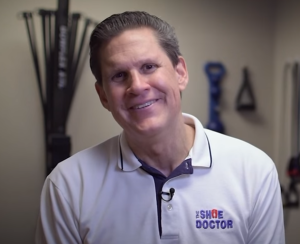If you are experiencing pain in your feet, you may have metatarsalgia. This condition can be very painful and make it difficult to perform everyday tasks. In this article, we will discuss 5 fast facts about metatarsalgia that you should know. We will also provide tips on how to manage the pain and improve your quality of life.
What You Should Know About Metatarsalgia in 2022
Metatarsalgia is a painful condition that can make it difficult to walk, run, or even stand. The condition is caused by inflammation of the metatarsal bones, which are the long bones in the foot that connect to the toes. Metatarsalgia can be caused by a variety of things, including injury, arthritis, and even wearing high heels.
If you’re suffering from metatarsalgia, there are a few things you should know. Here are 5 fast facts about metatarsalgia in 2022:
Fact # 1:
Metatarsalgia is a general term used to describe pain and inflammation in the metatarsal region of the foot. This area includes the ball of the foot, which is the fatty pad that cushions the bones in this area.
Fact # 2:
The most common symptom of metatarsalgia is sharp, shooting pain in the ball of the foot. This pain is often worse when walking or standing for long periods. Other symptoms can include numbness, tingling, and burning sensations.
Fact # 3:
There are many possible causes of metatarsalgia, including improper footwear, high heels, bunions, hammertoes, arthritis, and stress fractures. In some cases, no specific cause can be identified.
Fact # 4:
Metatarsalgia is typically diagnosed based on a review of symptoms and a physical examination. X-rays or other imaging tests may be ordered to rule out other conditions.
Fact # 5:
Treatment for metatarsalgia often begins with conservative measures, such as rest, ice, and over-the-counter pain relievers. Wearing proper footwear and avoiding high heels can also help. In some cases, custom orthotics or other devices may be recommended to improve foot mechanics. If conservative measures are not effective, surgery may be an option.
How to Manage Metatarsalgia Pain
Metatarsalgia is a condition that can cause pain in the ball of your foot. It is often caused by activities that put extra pressure on your feet, such as running or dancing. If you have metatarsalgia, you may have pain when you walk, run, or stand for long periods. You may also have numbness or tingling in your toes. There are several things you can do to manage metatarsalgia pain:
1. Try to avoid activities that put pressure on the ball of your foot. This means no high-impact exercise like running or jumping, and no standing for long periods.
2. Wear shoes that fit well and have plenty of cushioning in the sole. Avoid shoes with narrow toe boxes or high heels, which can put extra pressure on the toes and balls of your feet.
3. Use arch supports or pads to help distribute weight evenly across your foot. You can find these at most drugstores or online.
4. Stretch your feet every day. Simple exercises like rolling a tennis ball under your foot can help stretch and strengthen the muscles in your feet.
5. If the pain is severe, you may need to take over-the-counter pain relievers like ibuprofen or naproxen. If these don’t help, talk to your doctor about other options. With proper treatment, metatarsalgia pain can be managed so you can get back to your favorite activities.
When should you visit your doctor?
You can usually treat metatarsalgia at home without visiting your doctor. However, you should see a doctor if:
- Despite using self-help therapies, the discomfort does not lessen.
- It’s remarkable how much impact a little hurt can have on your routine life.
- If you develop severe foot discomfort or a change in the shape of your foot all of a sudden, this might be an indication of a more serious problem that necessitates prompt treatment.
Your doctor may recommend a series of tests to look for underlying concerns, such as x-rays, scans, or blood samples. They can also recommend you to a podiatrist, physiotherapist, or foot and ankle surgeon who specializes in foot care. In certain cases, medical experts may advise you to try other treatments, such as custom-made insoles (orthotics), foot and ankle exercises, steroid injections, or, in the most severe situations surgical procedures.
If you are experiencing pain in the ball of your foot, make an appointment with your doctor to discuss treatment options. With proper diagnosis and treatment, most people with metatarsalgia can find relief and improve their quality of life.
Remember, The 3 Arches of Your Feet Still Need Support!
Maybe you have already felt the first symptoms of balance disorders or you want to prevent them from appearing in the first place. Consider getting a foot orthotic device or simply take care of your feet. Start by washing them thoroughly with a gentle soap whenever you take a shower. Being a very complex support system, your feet are your first line of defense against balance-related issues, since their arches provide you with the stability you need in your daily life. It’s time to put your foot down and push back against balance issues. With both feet on the ground, dedicate yourself to keeping them comfortable and healthy. Give us a call and we will scan your feet to make you custom orthotic inserts.
The Shoe Doctor has specialized in providing custom orthotics for 20 years. The right orthotic insoles can greatly reduce foot, knee, and hip pain while increasing performance and comfort. Russell at The Shoe Doctor will help educate and assist you in finding the perfect solution for your particular situation. We will create a 3D map of your feet and make custom orthotics for your hiking boots, everyday shoes, and everything else in between. These orthotics, along with our expert advice, will get you using orthotics like a pro, and have you performing at the peak of your abilities in no time! If you are in the San Francisco Bay Area, give The Shoe Doctor a call to get the best custom orthotics in the area! We are here to assist you, schedule your free consultation here!


